If you’re a designer (graphic, digital, industrial, transportation, fashion, architectural), or just interested in design trends that impact the aesthetic world around us, AWOL Trends is definitely for you. If you’re also interested in how it came to be, where it is now, and where it’s going in the future, read on for a more in-depth look at the work behind this effort.
Flash back to 1998: I had just graduated Cal State Long Beach, and was lucky enough to get hired as a Junior Designer at BMW’s Designworks studio in California. The heavily style-centric Designworks afforded me the opportunity to learn that critical aspect of design from some of the best designers in the world. For the first year or so, everything I drew looked nature-inspired, translucent, and leaf-like; it was the only styling language I knew as a young grad. Fortunately, other groups like Philips were putting out a lot of the same aesthetic (which was probably where I got the idea), so I was able to ride it for a year. I called it the Translucent Leaf. If you think of styling languages as aesthetic modes, similar to how there are certain modes in music that create different emotional responses, you can see how these can become tools in a designer’s visual toolkit. Just as a musician needs to learn many notes and chord progressions to compose a symphony, a designer must have access to a large number of aesthetic modes to create products for different clients. And as far as these modes went, at that time I knew exactly one. The Translucent Leaf. As you can see, it worked for a few clients.But the times they were a-changin’, and other designers, most notably Marc Newson, were making forms out of bent sheets of material, which enveloped a space and defined a volume. There seemed to be no end to how you could apply this simple method of defining a form. So I added another tool to my stylistic toolbox, and now I had Mode #2: Planar Forms. As you can guess, that year everything I did involved this new style. Mode #3 (Key Lines) followed soon after, inspired from the automotive design group, and Modes 4, 5, and 6 were soon to follow, which I added to my toolkit too.
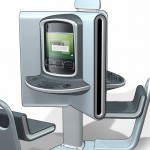
Soon I noticed some modes maintained their longevity and freshness, while others diminished as the global design culture moved on to the next great thing (Translucent Leaf, R.I.P. 2002). Hmmm, kind of like those things called “Trends” are supposed to do…more on this later. Some design firms or in-house teams even seem to have their own “house style” (i.e. Porsche Design, Ziba and frog for a while, and Designworks/BMW), as if certain stylistic modes were emphasized there over others.
As the years progressed (6 years at Designworks/BMW, 5 at frog design, etc), the amount of different modes I was exposed to grew exponentially as I picked up visual stimulus from various channels: other designers, other design teams, the internet, other cultures. Realize now that this isn’t unique, every maturing designer goes through this arc: acquiring these aesthetic themes to incorporate into their own work. If designers aren’t evolving, drawing inspiration, and incorporating it back into their projects, something’s wrong. But I did have the notion that there were many valid modes, with so many interconnections between them and movements below them, that I began to see them as an organized system. Furthermore, I saw the connection between these stylistic modes and the broader world of design trends that so many designers, brands, and style-setters are concerned about monitoring: they’re exactly the same thing.
Design Trends = Aesthetic Modes of Visual Design. “Aesthetic” because we’re talking purely about styling: subjective appearances as opposed to objective function. “Modes” because they can be layered, emphasized, and isolated like musical notes. “Visual Design” because we’re dealing with how objects look to the eye, not other aspects of design like ergonomics, usability, acoustics, or manufacturing. Once I realized these were exactly the trends that people were so concerned with being up-to-speed on, I decided to just refer to them as trends…much easier than Aesthetic Modes of Visual Design.
What was lacking for me (and for so many other designers) when it comes to trend tracking is that there are many agencies that supposedly offer this service, but their output is almost always completely inadequate for the needs of a professional designer. Unfortunately what is available to most designers is either very limited glimpses into the aesthetic landscape (only color/material trends), highly industry-specific trends (like Fashion only), or a constant stream of disconnected imagery (any design blog site). No one was looking at all design trends, making connections, and seeing the movements going on throughout the stylistic terrain. Designers are constantly seeking answers to the question: “what should this look like?”. It’s the “Form” side of the Form/Function interplay. An object can have an infinite number of stylistic embodiments, but which is the best one that will align with the preferences of the client, the target market, and be current within the overall aesthetic landscape or our culture? In creating a system of stylistic trends, I could help answer these questions quickly without having to concept out each direction. This was the beginning of how my structure of trends would be used to focus my explorations, and those of my team.
Over the last few years, acting as Creative Director leading teams of designers, I’ve used this trend database to inspire my teams, focus their explorations, and help build a visual narrative around concepts so that clients can understand the context of our aesthetic choices. I also use AWOL Trends directly with clients, almost as a stylistic deck-of-cards, gauging their comfort levels and uncovering their intangible vision for the project.
My vision for the trend database is that we look across all categories, from Architecture to Furniture to Fine Art. So I began scouring online, print, and real-world sources in each of the categories over and over. Eventually, when looking broadly across these different design worlds, persistent patterns emerged; connections that would become the tools in my aesthetic toolkit. Years later, this is exactly how we continue to build AWOL Trends: looking at absolutely everything, making connections, and capturing within our database.
Also, I didn’t want to be obsessed with only focusing on current trends. Designers need a full library of aesthetic themes to draw from, not just the recent best-seller shelf. There are long-wavelength trends and decades-long movements that shouldn’t be forgotten, but rather maintained as solid foundations. You would be surprised how many designers have either forgotten or were never exposed to those foundations. We do however delight in finding early signals of trends that may yet arrive, but conversely we also disdain fads that obviously have a weeks-long shelf life. If you think of the aesthetic world around us as an ocean, trends would be the surface waves that swell up and down on the surface. Fads are the choppy bubbles and foam on top of the waves, disappearing as soon as they are created. Movements would be the deep ocean currents which move the entire column of water, and upon which the trends are built.
With the public release of this years-long effort as a highly curated database specifically for designers, the creative community finally has a place to go for true inspiration. As of this writing, we’re currently at almost 100 individual trends across 18 categories. Over the course of the first year of AWOL trends, the majority of the database will be released week by week. A small fraction of our Early Signals trends are in a restricted access portion of our database accessible to our clients and design partners, but will eventually be released to public access.
Although we are constantly adding new trends, the time has come for the global design community to lend its perspective. At AWOL Company, we know design for Western markets like the back of our hands. But what about in India, China, or Africa? That’s where I hope the future of AWOL Trends lies, with designers in far-flung countries adding their own unique cultural identity to the existing tapestry. Picasso said that you never know when inspiration is going to strike, but it has to find you working. And at AWOL Company, we’re working to bring true inspiration to the design community, and thereby create an invaluable resource for the global creative mind.
Fellow designers, you may be thinking: “You’ll be giving away all our secrets!” Maybe so, but I hope in giving AWOL Trends away, we can learn more from the global creative community than we ever thought possible, and use that input to enrich our own visual vocabulary.
Enjoy!
-Andy Logan is an award-winning veteran of the design-consulting world, and founded the strategic design consultancy AWOL Company in 2010 to improve the way creative consultancies and clients collaborate. You can view Andy’s LinkedIn profile here, or visit AWOLcompany.com .

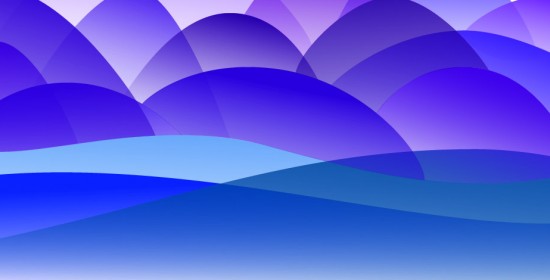


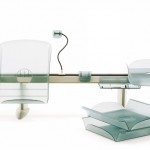
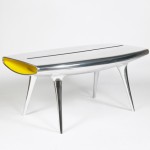
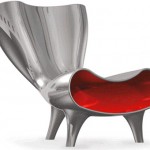

This is a wonderful contribution to the global design community and indicative of the passion and drive that is required to stand out from the noise.
Thanks Andy /AWOL!
Thanks Chris! It’s our hope that industry-leading designers like yourself find this to be an invaluable resource in their creative process. It will be growing rapidly each week, so please remember to check back frequently.
-AWOL Trends
Hurray! Finally, finally a website that starts digging deeper than all those “I think/I like/I love” websites that live as long as ice cream in the Sahara. I am so tired with endless picture collections and personal style websites trying to tell me what to do/like/know.
Please continue this fantastic approach!
Thanks Andy! Very glad designers such as yourself find value in this site….we sincerely hope this will become a useful tool for your creative process.
-AWOLtrends
Good to hear how your knowledge of trend and styling evolves over time. For designers in other countries, how should we look at our environments to find the trend. Thanks, Kai.
Hi Kai-
We are definitely interested in learning what aesthetic modes are moving through your own country. This is one of the main reasons AWOL Trends was created! Keep your eyes open, observe as many areas of design as possible (don’t just focus on cars or architecture), and try to find the themes uniting what you are seeing. Then put together a few images that capture what you are observing, and send them to us using the Submit form. Good luck on the search!
-AWOL Trends
This is the first site I have encountered that explains the current trends in terms of shapes, forms and other visual aspects of design. I am a transportation design student and this is truly wonderful. If possible please provide some data on what emotional design is all about. Keep up the great work !!